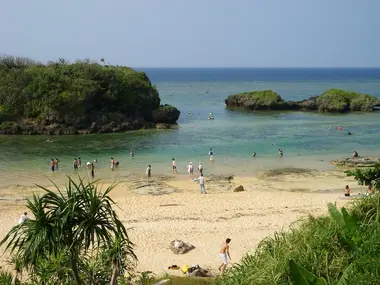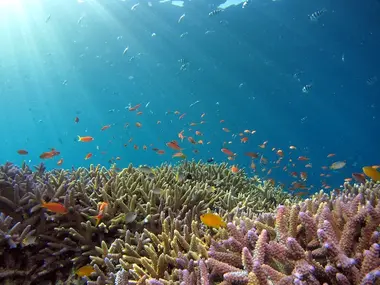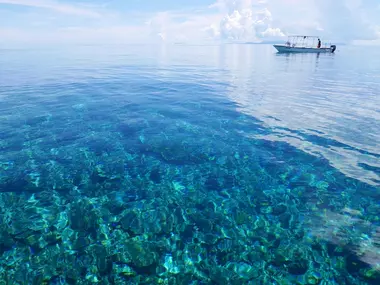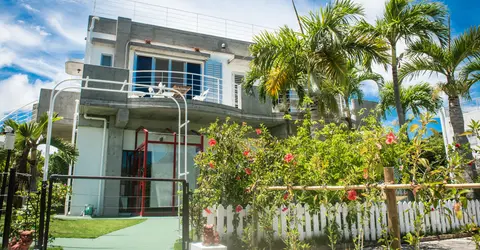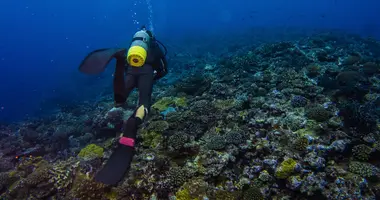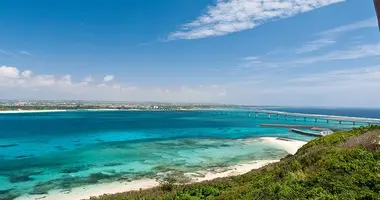Iriomote 西表
- Published on : 28/09/2020
- by : Japan Experience
- Youtube
Iriomote Island is the largest island of the Yaeyama Islands (Yaeyama-shoto), the group of 19 sub-tropical islands in the deep south western waters of Okinawa Prefecture (Ryukyu Islands).
Iriomote Travel Guide
The Yaeyama Islands are both the mostly southerly and westerly parts of Japan, located approximately 100km south of Miyako Island and 430km south of Okinawa main island.
Iriomote is one of Japan's most natural environments with over 90% of the island covered in thick tropical rainforests and mangrove swamps.
Iriomote has a population of only 2,000 people who are congregated in the port towns of Uehara in the north and Ohara in the south. Both Uehara and Ohara have ferry links with Ishigaki Port on Ishigaki Island, 20 km away to the east. The other main settlement on Iriomote is Funaura also in the north. Iriomote-jima has just one road (National Highway 215) on the north and east coasts that connects these small towns.
Iriomote is home to a number of exotic species of flora and fauna including the rare Iriomote cat or yamaneko (found only on Iriomote) and the dangerous habu snake, a species of pit viper. Iriomote National Park in the interior preserves over 34% of the island's 289 square kilometer area. Mt. Komi at 469m is Iriomote's highest peak.
Most people come to Iriomote on day trips from Ishigaki but longer stays on the island are necessary to enjoy the numerous adventure activities on offer: including trekking in the jungle interior, kayaking in the tropical rivers and scuba diving on the island's spectacular coral reefs.
Iriomote Sights
Iriomote's most famous sights are the waterfalls of Kampire-no-taki and Mariudo-no-taki (taki is waterfall in Japanese). Visitors hike up the 1.5km trail from the bank of the Urauchi River (Urauchi-gawa) to see the falls after after going up river by cruise boat or kayak. The cruise boat takes about 1 hour to reach the trail to the falls.
Another waterfall trip is to trek and kayak up to Pinaisara-no-taki, the tallest waterfall in Okinawa Prefecture, from Funaura. There are also boat tours up the Nakama River lasting about an hour from Otomi, which is just across the Nakama-gawa from Ohara.
If you arrive at Ohara, rent a car at the small ferry terminal and drive north towards Uehara, the first attraction you come to on your left is the Komi Sakishimasuonoki Grove, where a wooden pathway has been erected into a beautiful mangrove forest on the Maira River.
Visitors interested in Iriomote's varied wildlife should visit the informative Iriomote Wildlife Center (IWC), a free museum/research facility a short drive from Ohara and Komi Sakishimasuonoki Grove in the village of Komi. The IWC has wall panels detailing Iriomote's bird life, special features including audio-visuals on the Iriomote cat and stuffed specimens that have been hit and killed by vehicles, a bird's eye view of and information on the Cane Toad, an invasive species on the island that is a threat to Iriomote's indigenous species.
A few kilometers north off the coast is the paradisiacal Yubu Island, where fishermen from Taketomi would come by boat to grow rice. Nowadays there is more money to be made from water buffalo rides and it is amazing to see a stream of water buffalo carts coming across the flats at low tide. Oboe Island can be explored by bicycle or on foot and the small island has a sub-tropical botanical garden (admission charged). The island is home to many water buffalo and exotic species of plants including palms, mangroves and epiphytes.
Following the road further north past Cape Noharazaki to Takana is Iriomote Hot Spring (onsen) with indoor and outdoor baths (rotemburo) and a large sauna. There is a large mixed outdoor bath where swimsuits are required. Admission is free for guests of the nearby Painumaya Resort Hotel.
The road passes through a large expanse of forest before arriving at the small towns of Funaura and Uehara, which is the largest settlement on Iriomote and has a supermarket and a few places to eat.
The highway continues west past Nakano Beach, past the entrance for the river trips up the Urauchi River and on to Shirahama where the road ends.
Scuba divers are attracted to Iriomote to dive Manta Way, the strait between Iriomote and Kohama Island, where manta rays can be seen between April and June.
Iriomote Beaches
Hoshinozuna Beach on the northern tip of Iriomote is noted for its star-sand (hoshizuna) made up of the skeletons of tiny sea creatures.
Nakano Beach is a lovely strand of golden sand very close to Uehara Town and has a camp site.
Funauki Beach is possibly Japan's most beautiful beach reached by boat from Shirahama.
The beaches on Iriomote are relatively undeveloped and care should be taken while swimming or snorkeling especially of the potentially fatal habu jellyfish.
Iriomote Beaches
Hoshinozuna Beach on the northern tip of Iriomote is noted for its star-sand (hoshizuna) made up of the skeletons of tiny sea creatures.
Nakano Beach is a lovely strand of golden sand very close to Uehara Town and has a camp site.
Funauki Beach is possibly Japan's most beautiful beach reached by boat from Shirahama.
The beaches on Iriomote are relatively undeveloped and care should be taken while swimming or snorkeling especially of the potentially fatal habu jellyfish.
Access - Getting to Iriomote
Naha is the transportation hub for the Ryukyu Islands with short-hop flights to the other islands: Amami Oshima, Ishigaki, Miyako, Kumejima, Yoron, Yonaguni, Minamidaito and Kitadaito.
Air
To/From Naha
Frequent direct flights to Naha leave from Tokyo (both Haneda and Narita airports), Osaka, Fukuoka, and Nagoya.
Less frequent direct flights leave from many other Japanese cities including Kobe, Sendai, Niigata, Shizuoka, Takamatsu, Hiroshima, Kagoshima, Kumamoto and Nagasaki.
There are also flights from Taiwan and other mainland Asian cities including Seoul. There are direct flights to Miyako Island from Tokyo and Osaka. Flights to Ishigaki Island from Nagoya and Fukuoka go via Naha.
To/From Ishigaki
There are also some direct flights with JAL and ANA from Ishigaki Airport to Tokyo (Haneda & Narita), Osaka KIX, Nagoya Centrair and Fukuoka (in summer). Peach flies to Kansai International Airport (KIX) and Naha beginning in 2013.
There are short-hop flights from Ishigaki to Miyako Island and Yonaguni. There is no airport on Iriomote and visitors must arrive by boat.
Ferries
Ferries from Ishigaki Port are operated by a variety of competing companies and go to Taketomi Island (10 mins), Iriomote (40 mins), Kuroshima (30 mins), Kohama (30 mins), Hateruma (60 mins) and Yonaguni Island (4 hours). Some ferry companies offer a "passport" which is valid on all their ferries for a period of usually three days. Some of the companies have English-speaking assistants and Ishigaki Port has a dive center that can arrange diving tours of the coral reefs for you and other adventure trips such as kayaking and paragliding.
Anei Kanko, Ishigaki Dream Kanko Ferry and Yaeyama Kanko Ferry operate express boats from Ishigaki to Iriomote.
Transport on Iriomote
To get around Iriomote hiring a car is your best bet or use one of the island's infrequent buses. Iriomote Kotsu buses have 5 daily buses in each direction from Shirahama to Funaura (30 minutes). Three of the five buses continue on to Ohara on the east coast. Ohara is 50 minutes by bus from Funaura. A three-day bus pass is available for 1000 yen.



